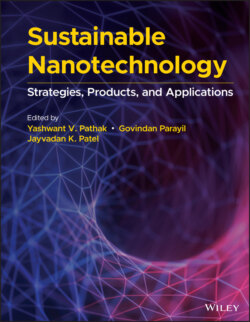Читать книгу Sustainable Nanotechnology - Группа авторов - Страница 53
2.2.2.1 Type of Approach
ОглавлениеBroadly, the tuning of particle size for nanoscale is being carried out by two approaches: top‐down (TD) and bottom‐up (BU). In TD approach, there is diminution of larger materials into smallest possible size, while in the BU approach there is assembly, aggregation, or formation of NPs, atom by atom, through precipitation or growth of nuclei. In TD method, pulverization can be achieved by means of impact (such as hammer mill) and attrition alone or impact and attrition (ball mill and fluid energy mill) together. This approach requires high energy requirement and fewer steps. The main issue with such impact‐ and/or attrition‐based mill is unavailability of narrow size range. Still narrow size range can be achieved, but that will bring huge amount of waste.
BU approach is well known for its customization in design such that it reduces waste production, but this method uses organic solvents. Even after completion of the manufacturing process, these organic solvents remain in the system and need additional step for their removal, and thus, toxicity of residual solvents always remains a threat in NMs manufactured by such methods.
The use of organic solvents can be replaced with few nonorganic solvents. Such green methods use supercritical fluids (supercritical CO2, ethyl alcohol, or water) that bring extremely pure NMs. The greener methods require exclusive pressurized apparatus with further successive steps [44]. Green methods for the production of NMs can address sustainability issues scalable for large manufacturing, cost‐effective, versatile, and tunable nonagglomerated nanoclusters and overcome the key barrier for the progress of large‐scale manufacturing of NMs.
